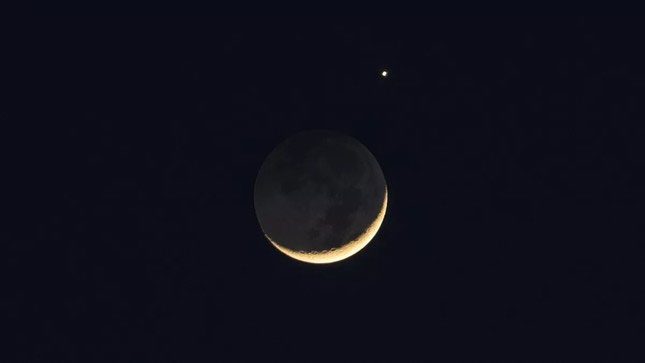The Crescent Moon, Venus, and the Pleiades constellation came together during the peak of the Lyrids meteor shower on April 24, creating a stunning celestial display. Sky enthusiasts witnessed a beautiful astronomical phenomenon.
As the Moon and Venus—two of the brightest objects in the night sky—appeared as if they were about to collide amid a meteor shower, the scene was set against the backdrop of a magnificent star cluster.

Venus and the crescent moon captured on March 24, 2023, in Changchun, Jilin Province, China.
Venus was located 6 degrees above and to the left of the slender crescent Moon, with the Pleiades cluster—a group of seven visible stars (along with many fainter stars) commonly referred to as “the Seven Sisters”—located at the same apparent distance below the delicate crescent Moon, according to NASA.
For several weeks, the Moon and Venus gradually moved toward the point where they appeared closest to each other in Earth’s sky. This phenomenon occurs every few months between the Moon and other planets in the Solar System, allowing us to witness it in the night sky. Of course, in reality, the Moon and Venus are millions of miles apart, and the Pleiades cluster is even farther away, located 444 light-years from Earth.
Meteor showers occur when debris from a comet’s tail vaporizes high in Earth’s atmosphere, causing dust and ice from the comet to appear as streaks of glowing vapor in the heated atmosphere.
The fiery trails in the sky created by the Lyrids—one of the oldest known meteor showers first recorded in China around 687 BC—are remnants of Comet Thatcher.
The stream of cosmic debris from Comet Thatcher has been observed from Earth for over 2,600 years and enters Earth’s atmosphere every April at a speed of 47 kilometers per second as Earth’s orbit takes us through Thatcher’s debris trail, according to NASA. Comet Thatcher slowly orbits the Sun, completing one orbit approximately every 415 years.


















































